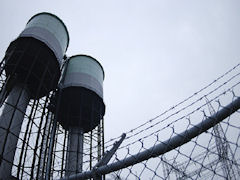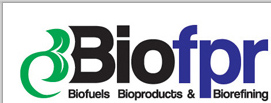Features
Shell Singapore: meeting Asia's Growing demand for petrochemicals
Date: 2010-05-04 15:32:50.0
Author: Royal Dutch Shell plc
 THE HAGUE, The Netherlands -- Shell's (NYSE: RDS.A)(NYSE: RDS.B) largest integrated refinery and petrochemicals complex is now fully online. The multi-billion dollar project in Singapore boosts the supply of raw materials for many everyday products and uses ultra-efficient Shell technology. The site is already supplying products to Asian growth markets and to manufacturers in Singapore. It is a cornerstone of Shell's strategy to focus on growth and profitable downstream markets.
THE HAGUE, The Netherlands -- Shell's (NYSE: RDS.A)(NYSE: RDS.B) largest integrated refinery and petrochemicals complex is now fully online. The multi-billion dollar project in Singapore boosts the supply of raw materials for many everyday products and uses ultra-efficient Shell technology. The site is already supplying products to Asian growth markets and to manufacturers in Singapore. It is a cornerstone of Shell's strategy to focus on growth and profitable downstream markets.
"Demand for petrochemicals is growing at around 4-5% per year in Asia," says Iain Lo, Shell Chemicals Vice President for New Business Development & Ventures. "So being in Singapore positions us very well to capture that growth."
Output from the site includes mono-ethylene glycol (MEG), the raw material needed to make everything from plastic packaging to polyester clothing. It has the capacity to meet nearly 6% of Asia's demand for this raw material, or enough to make almost 7 billion polyester shirts a year.
The Shell Eastern Petrochemicals Complex (SEPC) investment project - building new chemicals plants and upgrading a refinery - was a huge engineering feat that involved more than 15,000 people from more than 20 countries at the peak of construction. It took a crane with the biggest capacity ever used in Singapore to lower steel reactors - at around 1,400 tonnes each is as heavy as seven jumbo jets - into the heart of the new MEG plant which produces the raw material essential to make polyester and packaging.
Most efficient production
The MEG plant uses the new award-winning technology developed by Shell, called OMEGA (Only MEG Advantage). It is a fully catalytic process for the conversion of ethylene into MEG instead of a conventional thermal process and produces more MEG per tonne of ethylene than any other technology in the industry. This process saves shipping and storage costs as it creates virtually none of the other raw materials that come from thermal conversion. It also consumes about one-fifth less steam and generates about 30% less waste water.
Capital costs for the new MEG plant are considerably less than for a conventional MEG plant with the same capacity.
In addition, the refinery and petrochemicals plant uses nearly 100% wastewater, treated and recycled by Singapore's national water company. Water is used for cooling and in the reactions to turn raw material into valuable products.
Squeezing the most out of every barrel of oil
The complex is designed to perform well through the economic cycle. The refinery is integrated with the chemicals plant on Bukom Island off the coast of Singapore and linked up by a series of pipelines to chemicals plants on Jurong Island. They share the same infrastructure.
The refinery can handle a wide range of crude oil, which it processes into different fuels and petrochemicals raw materials. It pumps some of these materials to the new ethylene cracker built next to it for further processing. The cracker converts these into other products, including ethylene, propylene and benzene. Pipelines on the seabed - each 4.5 kilometres (2.8 miles) long - connect the cracker to the new MEG plant and other customers on Jurong Island. Ethylene can be cooled down to a liquid for export from a new jetty or stored in a cryogenic terminal.
The refinery and cracker can handle a wide range of raw materials selected to take advantage of fluctuations in market conditions and supply, squeezing the most value out of every barrel of oil.
The cracker, for example, can process heavier, lower cost raw materials from the refinery, thanks to proprietary Shell technology. This gives it a competitive advantage over crackers that process more costly raw materials. It increases the margins between the cost of raw materials and the sale of the high-value petrochemicals that it makes.
"We can maximise our margins depending on feedstock prices," says Huck Poh, General Manager of the Pulau Bukom Manufacturing Site. "We can direct chemicals streams to the product that gives the biggest bang for the buck."
Second mega-petrochemicals project
The refinery on Bukom Island off the coast of Singapore processes over 500,000 barrels of crude oil a day, enough to fill 3.9 million cars.
The cracker was built within the existing refinery while it was still pumping out its products. It started up in March 2010 and has the capacity to produce 800,000 tonnes a year of ethylene, a colourless gas used to make many products from polyethylene packaging to detergents; 450,000 tonnes of propylene, used in car parts, insulation and synthetic rubber; and 230,000 tonnes of benzene, a base chemical needed to make styrene and computer casings. A unit to extract butadiene - used, for example, to make rubber - is currently starting up.
The MEG plant started up in November 2009 and has the capacity to produce 750,000 tonnes of MEG a year.
The SEPC investment is a 100% Shell project and its largest chemicals investment to date. It is Shell's second mega-petrochemicals project after the Nanhai joint venture with CNOOC that started up five years ago, and is the latest step in its strategy to concentrate the global downstream business into fewer, larger markets. Shell has been in Singapore since 1891.
Website: http://www.shell.com
This article has not been tagged with keywords.
